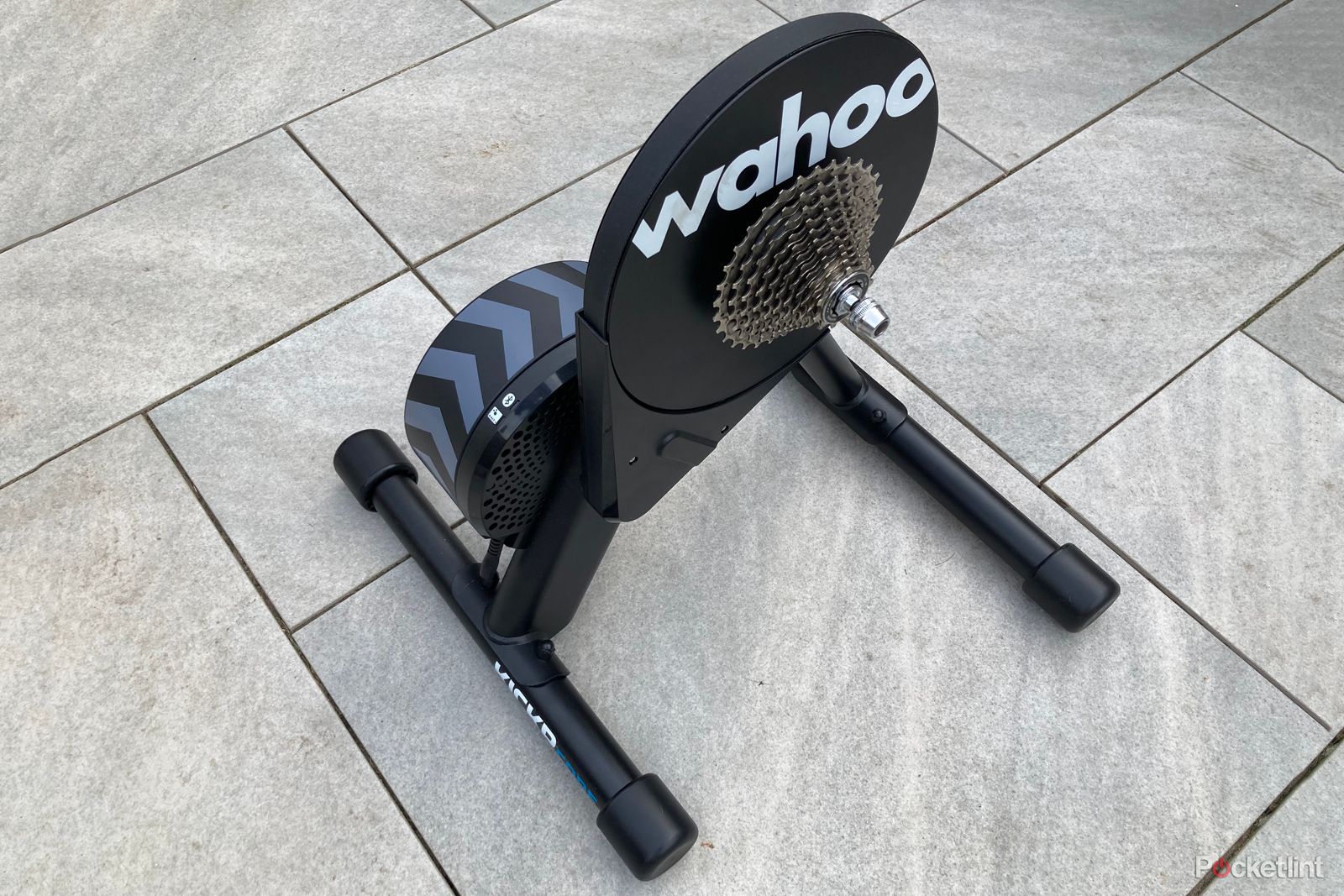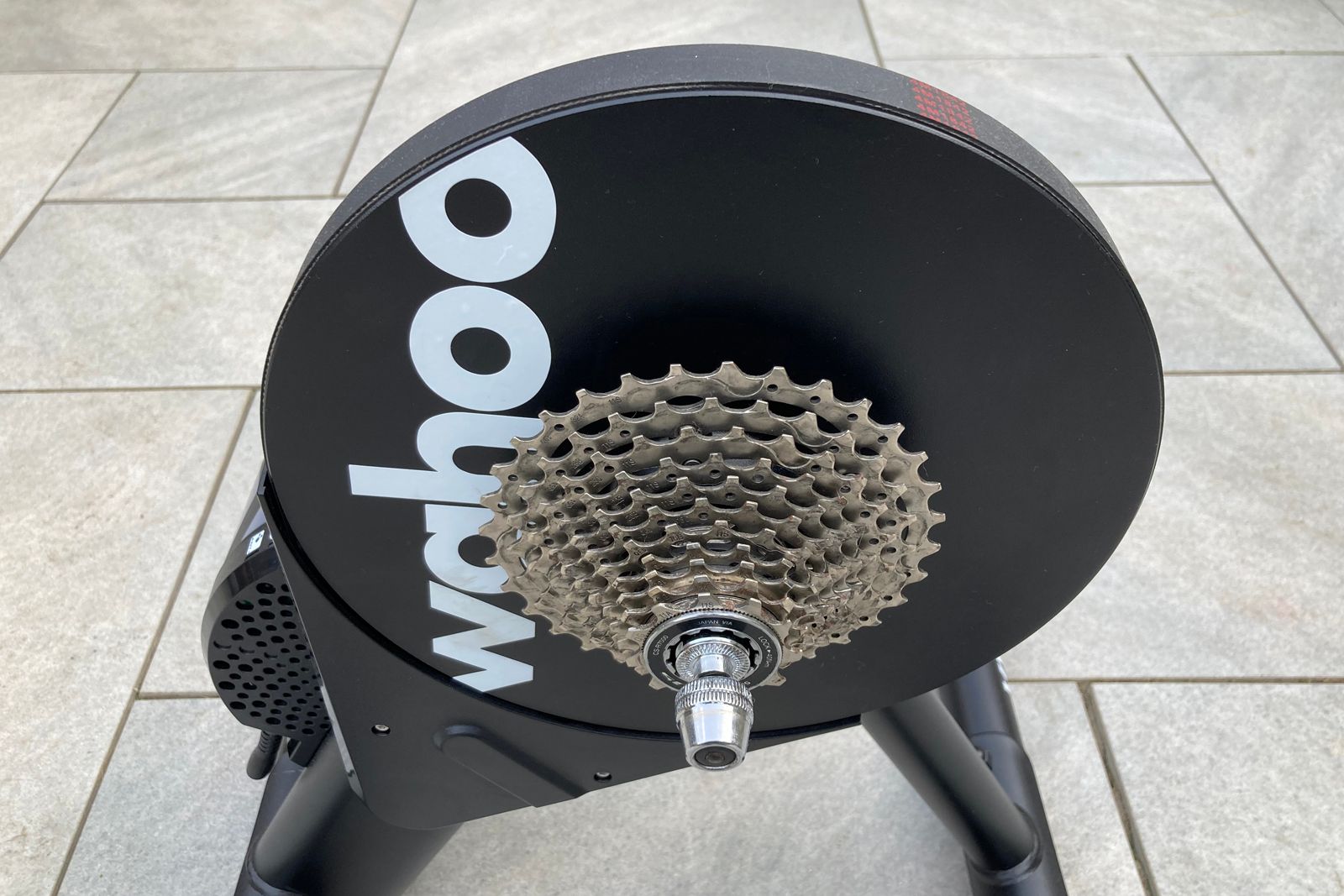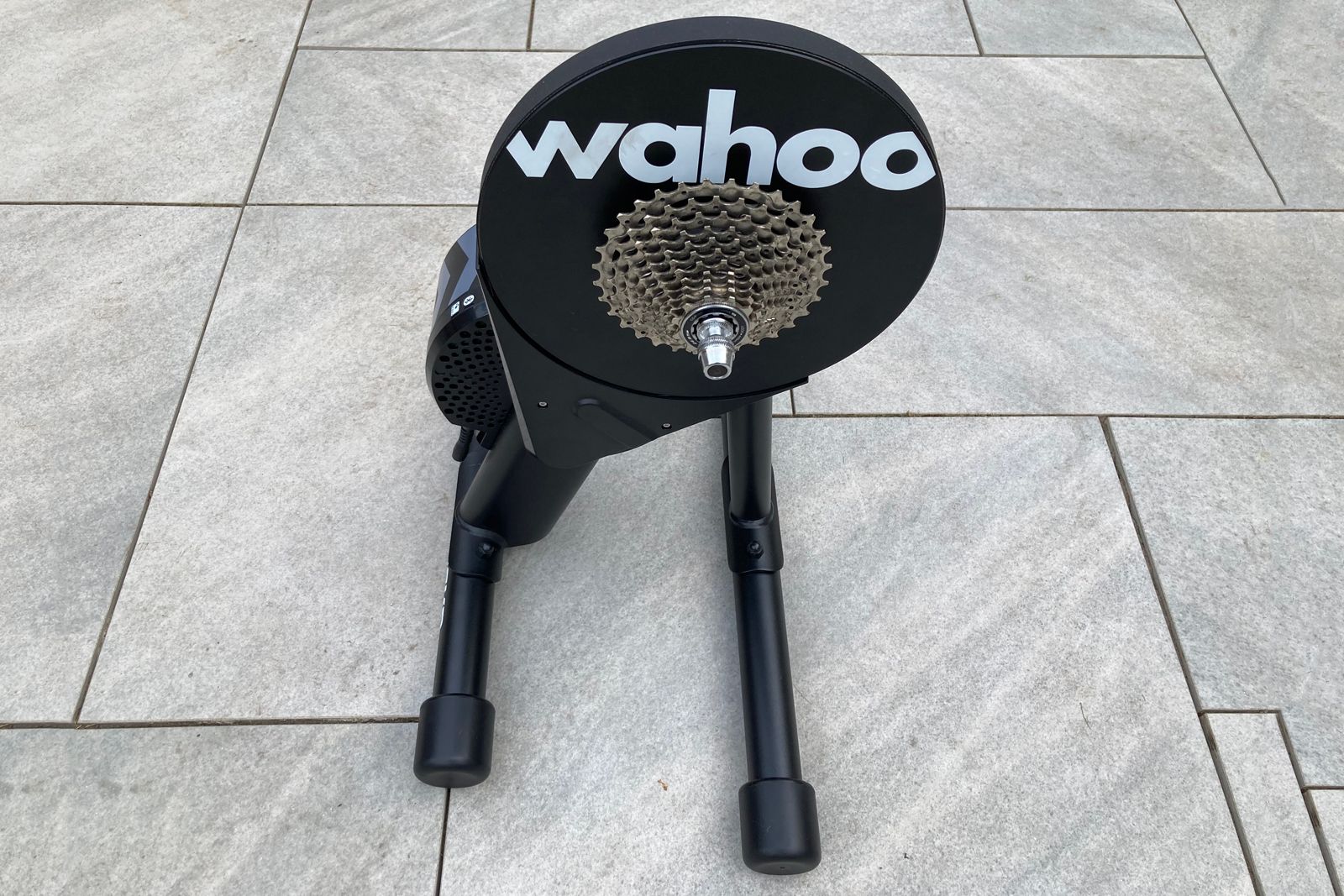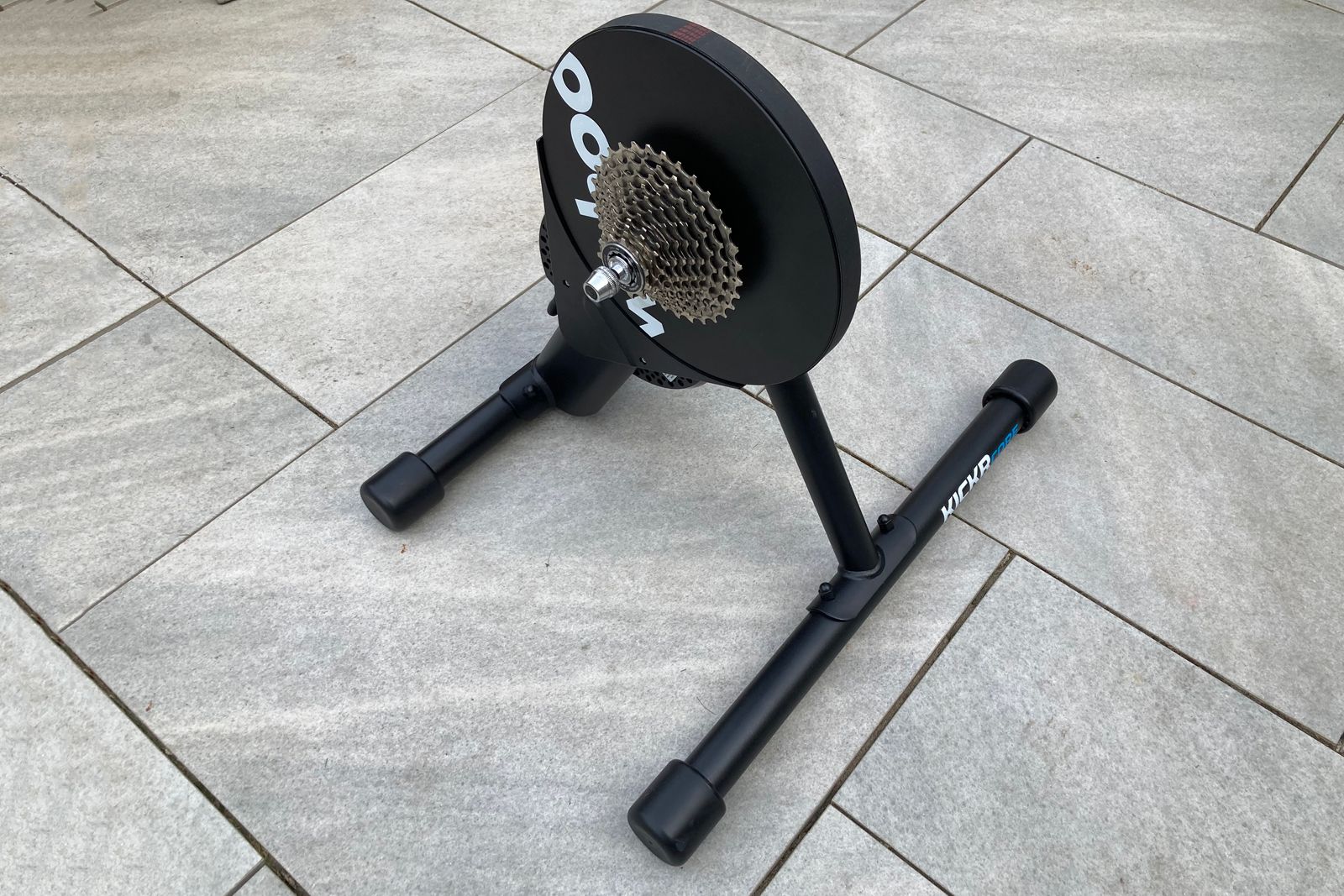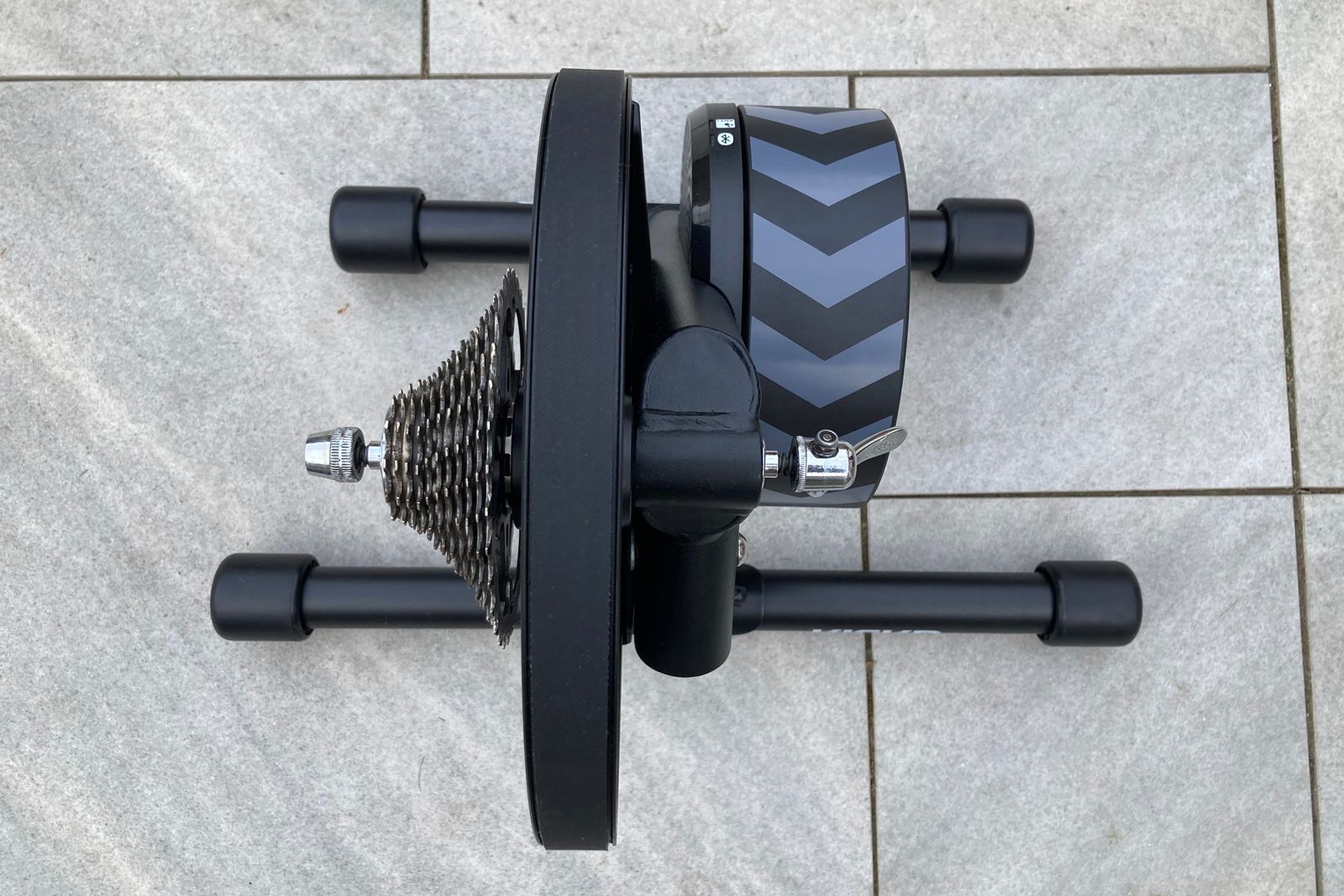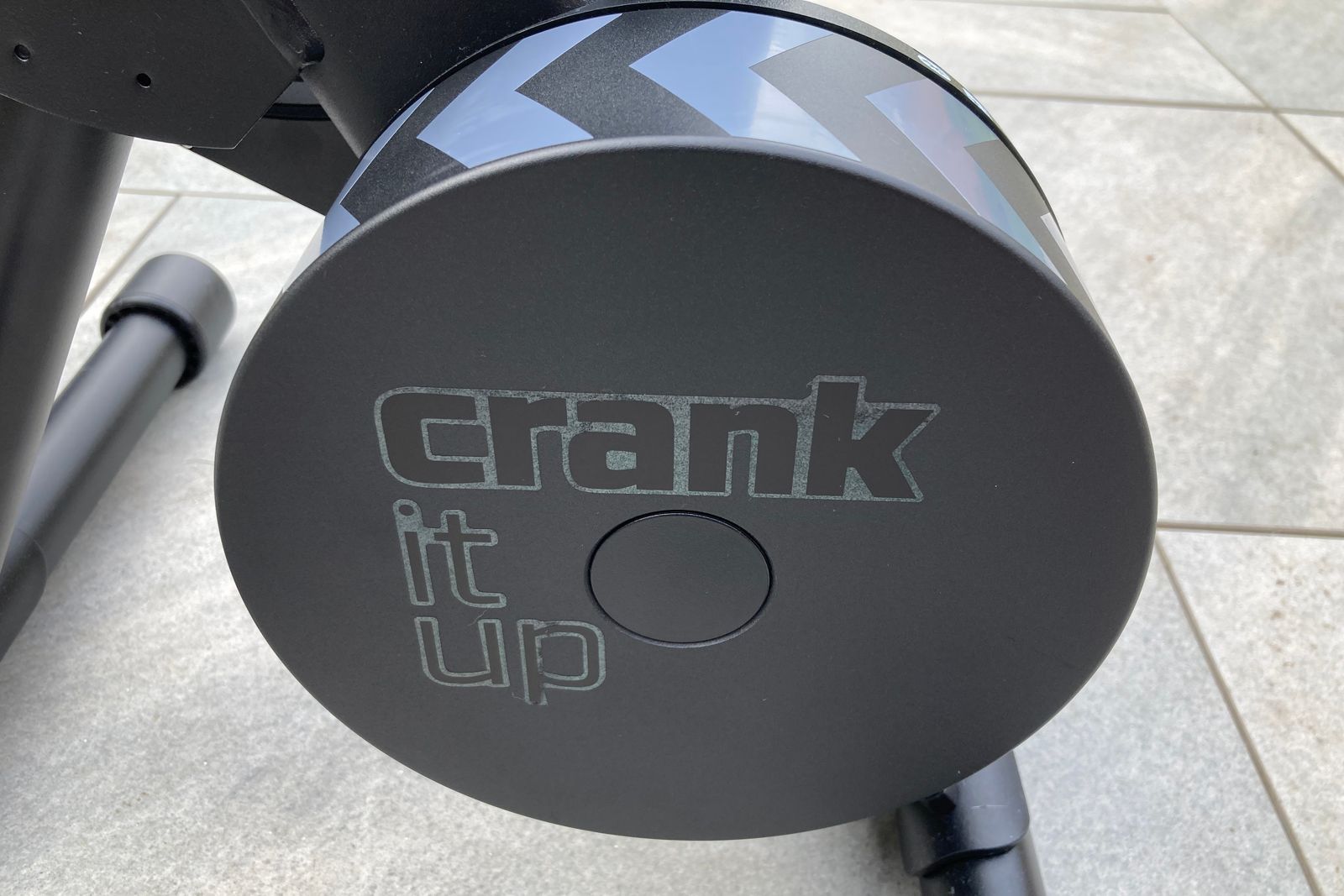When Wahoo released its premium Kickr turbo trainer back in 2020, it had an immediate impact among pros and amateurs alike.
With the company's Kickr Snap already offering a solid entry-level option, too, Wahoo decided that it needed a mid-level trainer to complete its lineup.
Enter, the Kickr Core. This model leans so heavily on the build quality of its bigger brother - the v5 Kickr - that it's immediately one of the more intriguing options to consider in the mid-range tier.
We've been testing it out to see whether it holds up against the market's latest options.
Our quick take
The Kickr Core hits the sweet spot of features, functionality and price in Wahoo's turbo trainer line-up.
It provides all of the most important features from its bigger brother, the Kickr, in a slightly pared-back and cheaper package. It's easy to see why this has become a firm favourite among indoor riders. Its build quality is rock solid, there's accurate power and cadence data and it is super quiet in operation.
There is strong competition in the turbo market, with many companies taking aim at the Core's market while undercutting it on price, but, for our money, the premium you may pay for the Kickr Core is worth it.

Wahoo Kickr Core - 5.0 / 5
| FOR | AGAINST |
|---|---|
|
|
Design and setup
- Dimensions (legs open): 508 x 584 x 483mm
- Total weight: 18kg
- Flywheel weight: 5.4kg
- Supported hubs: Shimano/Sram (8-11 speed)
- Rear axle: 130/135mm
- Thru axle: Quick release/142/148mm
- Disc brake clearance
The first thing we noticed when unpacking the Core is its weightiness. It has the feeling of solidity that gives you immediate confidence - even if it does mean we had to wrestle it a little to fit on the two supporting legs.
It's a five-minute job to complete the setup, including installing a cassette. You don't get one included with the Core, so you'll need to factor that into the overall cost - and adapters for your bike's axle.
It comes ready for a Shimano/Sram cassette to be added, so you'll need to purchase an additional hub from Wahoo if you want to run Campagnola or Sram XDR cassettes.
Wahoo also recommends that you download its app so that you can update the Core with the latest firmware and register it with them. The app also affords you some basic control of the Core, such as setting a target resistance level or wattage, or, more importantly, performing a spindown to calibrate its power meter. However, we suspect that most people will ignore this app for the most part, as they will be using their favoured third-party apps.
Once it's all set up, the Core has a premium look and feel to it. From the matte black finish to the metal work - there's only a small amount of plastic covering used - combined with the chevroned flywheel and Wahoo decal, it really looks the part. Usefully, the Core can also be partly folded when not in use, with the legs closing together to reduce its footprint, which will appeal to users who don't have a huge dedicated space for training at home.
Unlike its big brother, the Kickr v5, the Core doesn't have a carrying handle. This isn't too much of a loss for the majority of the time, but it is a little awkward trying to move the Core around, as there are so many moving parts that you might naturally hold to do this.
Let's get physical
- Maximum power output: 1,800W
- Maximum simulated grade: 16 per cent
- Resistance type: Electromagnetic
- Power accuracy: +/- 2%
- Connectivity: Bluetooth Smart / ANT+ / ANT+ FE-C
The Core is a direct drive turbo, so you remove the rear wheel of your bike and fix it to the trainer. It's compatible with most road, gravel or mountain bikes, though there is no way of adjusting the Core's height to allow for different wheel sizes.
This means that you may be riding at a slight upward or downward angle when using it - however, in practice, we have never found this to be a problem and aren't really able to even notice the subtle differences. If it really caused an issue for a rider, a front-wheel block can be purchased separately.
The Core needs to be calibrated when you set it up, and Wahoo then recommends this is repeated every 2 weeks to ensure accurate power readings. Some premium trainers, including Wahoo's own Kickr, auto-calibrate, meaning that you don't ever have to perform spindown tests. Performing the spindown is an easy 2-minute task through Wahoo's own app and many of the third-party apps also have a spindown option, so we didn't find it a particular chore.
With everything set up, we tried out the Core with some of the most popular third-party apps, Zwift, Trainer Road and Wahoo's own Systm (previously known as Sufferfest).
The Core was, as we would hope, found immediately by each of the app, whether we connected using Bluetooth or ANT+. We didn't suffer a single dropout, either, on what proved to be rock solid connections.
The ride feel of the Core is truly excellent, offering smooth and responsive resistance. It has a solid 'planted' feeling that gives you full confidence when getting out of the saddle and going full tilt in a sprint, something that we can't say for every turbo that we've tried.
However, this strength is also the limitation of every trainer of this style, with a lack of lateral movement meaning that fatigue, and a certain amount of saddle numbness, can set in after a time.
The Core itself is very quiet, though. Even when we were putting in all-out efforts, the noise from our drivetrain was usually more noticeable than the hum from the Core's flywheel. It would be quiet enough to be able to use the Core in an open plan room with other people carrying on around you; they would notice you gulping in air as you increased your efforts far more than the Core itself.
We found the Core to be pretty much spot-on accurate in its power recording, as well, showing consistent readings with both our Garmin Vector 3 and Wahoo Powrlink Zero power meter pedals.
When using training programmes that demanded you reach and hold a specific power output, the Core's ERG mode responded quickly and smoothly to do this, setting it aside from some of its competitors that struggle to do this as efficiently.
Its large 5.4kg flywheel, combined with electromagnetic resistance, means that the Core can offer up to a maximum of 1,800 watts resistance. This is considerably less than some trainers, with many other premium brands offering around 2,500 watts maximum output.
In reality, 1,800 watts is more than enough for everyone other than elite athletes performing very specific training drills and we didn't get close to troubling the maximum output, our maximum efforts barely hitting 900 watts for a few seconds.
The Core also measures cadence and gave accurate readings when compared against a separate cadence sensor, which was useful when performing workouts focusing on low cadence/high resistance or quick spinning alike.
To recap
It's hard to find fault with Wahoo's mid-tier turbo trainer. Sure, it doesn't quite have all the bells and whistles of the top of the range model, but, for most indoor riders, this is right in the sweet spot of functionality and price. It delivers on all of its promises: it's accurate, built to last and is backed by Wahoo's customer service.

